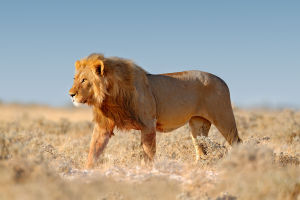Secrets of Eagles
Hey Lykkers, did you know that the bald eagle, America's national bird, undergoes a fascinating transformation in its plumage as it matures? It starts with a mottled brown look before eventually developing that iconic white head and tail.
Plus, these majestic birds have a vision that's up to five times sharper than ours, making them incredible hunters. They've also made an amazing comeback from the brink of extinction, thanks to some serious conservation efforts. Isn’t it cool how such a powerful symbol has such an interesting and inspiring story?
1. Unique Plumage Development
Unlike many birds, bald eagles undergo a significant transformation in their plumage as they age. Juvenile bald eagles sport a mottled brown coloration with streaks of white, which can make them resemble golden eagles. It isn’t until they are about 4 to 5 years old that they develop the iconic white head and tail feathers. This striking white coloration, contrasted with their dark brown body and massive yellow beak, only emerges once they reach full maturity, making the bald eagle's transition a remarkable aspect of their life cycle.
2. Extraordinary Vision
Bald eagles possess vision that is four to five times sharper than that of humans. Their eyes are adapted to detect prey from incredible distances, allowing them to spot a fish swimming in the water from as high as 3,000 feet above ground. This exceptional eyesight is due to the large number of retinal cells in their eyes and a special layer called the tapetum lucidum, which enhances their ability to see in low light conditions.
Bald Eagle Facts: NOT actually BALD 🦅 Animal Fact Files
Video by Animal Fact Files
3. Symbolic Significance
The bald eagle’s role as a national symbol is deeply rooted in history. Chosen as the emblem of the United States in 1782, the bald eagle represents strength, courage, and freedom. Its selection was partly due to its majestic appearance and its impressive wingspan, which can reach up to 7.5 feet. The eagle’s ability to soar high and its regal demeanor made it a fitting symbol for the new nation’s ideals.
4. Powerful Hunting Skills
Bald eagles are skilled hunters with an incredible grip strength of approximately 1,000 pounds per square inch. Their talons are designed to snatch and hold onto prey with precision. While they primarily feed on fish, they are opportunistic hunters and scavengers, sometimes preying on waterfowl, and small mammals, or even stealing from other birds of prey. Their hunting technique involves a dramatic plunge into the water from heights up to 100 feet, showcasing their agility and strength.
5. Conservation Success Story
Once on the brink of extinction due to habitat loss and the effects of DDT pesticides, the bald eagle has made a remarkable recovery. Thanks to rigorous conservation efforts, including the banning of DDT and habitat protection, the bald eagle population has surged from fewer than 500 breeding pairs in the 1960s to over 300,000 today. This resurgence is a testament to the effectiveness of conservation measures and the resilience of the species.
6. Intriguing Nesting Habits
Bald eagles build some of the largest bird nests in North America, measuring up to 13 feet in diameter and weighing over 2,000 pounds. These nests are often used year after year, with the eagles adding new materials each breeding season. The size and durability of these nests reflect the eagles’ long-term commitment to their family and territory.
The bald eagle is not only a symbol of national pride but also a bird of impressive biological and ecological significance. From their dramatic plumage changes to their powerful hunting techniques and successful conservation story, bald eagles embody the spirit of resilience and majesty.


